A wine cellar can be an ideal low cost way to store a large collection of wines at home. But, sometimes reaching the ideal conditions for storing various kinds of wines can prove difficult. After all, a suitable space should be easy to access, and needs to be dark, well ventilated, free from vibrations, and able to maintain ideal temperatures and humidity levels.
Wine fridges are a great trouble-free alternative and many of them come equipped with full monitoring to ensure your wine is stored in ideal conditions. Modern beacon technology, such as the RuuviTag Bluetooth sensor, can further help reduce the hassle by providing real time monitoring directly on a mobile device.
But what are the ideal conditions for wine? Let’s walk through the basics of storing wine at home as well as how you can manage it in the most convenient way!
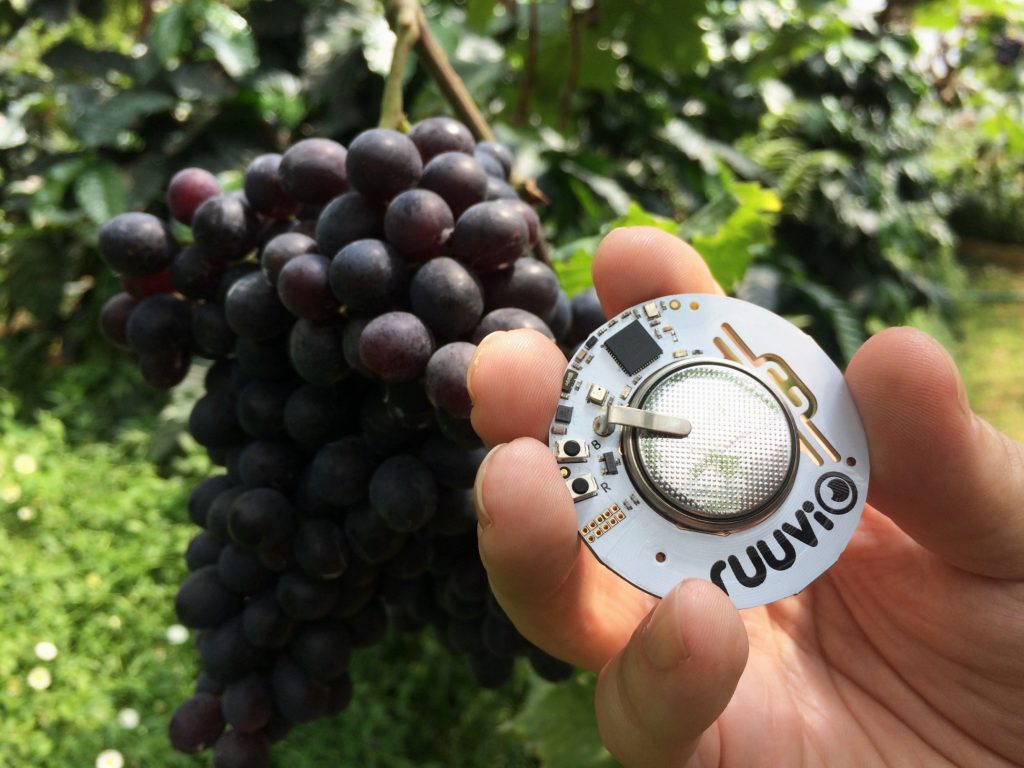
Ideal temperature for wine storage
Ideal temperature for a wine storage is between 8-19˚ C depending on wine type. Not all wines are created equal: inexpensive red wines can typically be stored for 2–10 years, while inexpensive white wines can be expected to last for 2–3 years in ideal conditions.
Some Chardonnays are quite happy on the shelf for even up to 20 years, while the world’s finest wines may handle storage for even a 100 years, if the conditions are right!
Red wine storage temperature
Light to medium-bodied red wines are happy in 12–16˚ C. Full-bodied red wines on the other hand thrive in 17–19˚ C. If you are aiming to hold onto your precious bottle for over a year, pay more attention to it. Then, aim to reach 12,5 ˚C. This temperature is considered as the “perfect” temperature for light to medium-bodied red wine.
Temperatures lower than 12˚ C will hamper the wine’s natural ageing. On the contrary, temperatures above 19 ˚C lead to wine ripening too quickly and damaging its taste. If exposed to these warmer temperatures, you should try to consume the wine as soon as possible. If you act quickly enough, you may have time to consume the wine before it ripens too much. Hence, receiving alerts regarding abnormalities in the wine storing location is such an important feature!
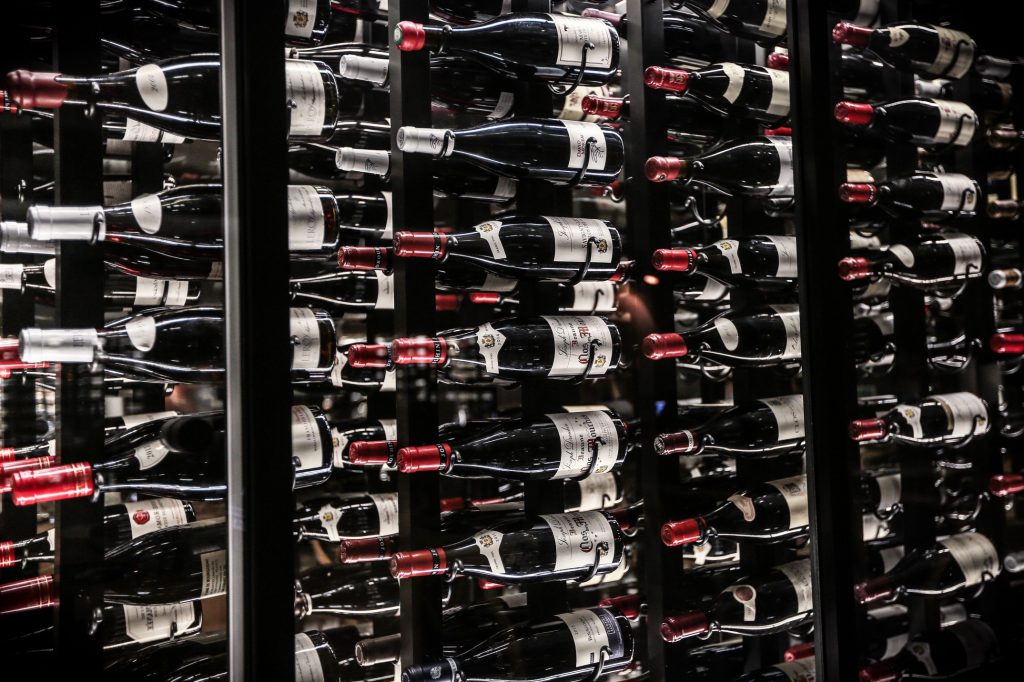
White wine storage temperature
White wines enjoy cooler temperatures than red wines. You should store your dry white wines at 8–12˚ C. White wines are prone to spoilage when exposed to sunlight, so pay attention to your light conditions to prevent this from happening.
If you are storing white wines and red wines in the same place, aim to keep an average temperature of 12 ˚C. It is common ground for both wine types. It is also important to keep the temperature at a constant level. Temperature fluctuations harm all wines in the long-run.
Sparkling wine storage temperature
Moving to the third type of wines: sparkling wines and sweet wines. Sparkling wine is served as a chilled drink. Hence, you need to cool it down prior to consuming this bubbly version of wine. First and foremost, do not store sparkling wine, champagne most importantly, in the fridge! Fridge causes all sorts of things to dry out and wine bottles’ corks are no different. Dried out corks will let carbonation out and the taste of the wine will worsen.
Keep your sparkling wines in approximately 12˚ C for longer periods of storing, as this temperature is suitable for almost all types of wines. Consequently, it is the right temperature to have in a wine cellar filled with different wines.
Regarding all types of wines, keep in mind that storage temperature should never reach or go beyond 24˚ C. This will prevent wines from browning, which is a sign of oxidation caused by excessive heat.
Here is a PDF file by a British company Winewares with more precise information about specific wine storing temperatures.

Optimal wine storage humidity
The ideal relative air humidity levels in a wine cellar should be around 65% – 75%. This is recommended primarily because of the use of the traditional cork seal, which can be sensitive to tainting, a chemical process that can spoil the taste and smell of bottled wine. Below 65% relative humidity will start to dry the cork out, releasing carbonation. This humidity level works with all types of wines, as it affects both the bottle and the cork.
Also, keep in mind to store the wine on its side. This will keep the cork moist and prevent it from drying out. This is the same for all types of wine.
Cork’s modern alternatives, synthetic corks, are designed to look and function like natural corks, while reducing the possibility of tainting or cork shrinkage. Storing wine in bottles is a step in the wine ageing process, and many modern wine makers still consider traditional or synthetic corks to be the number one option to use as wine bottle closure, regardless of their sensitivity.
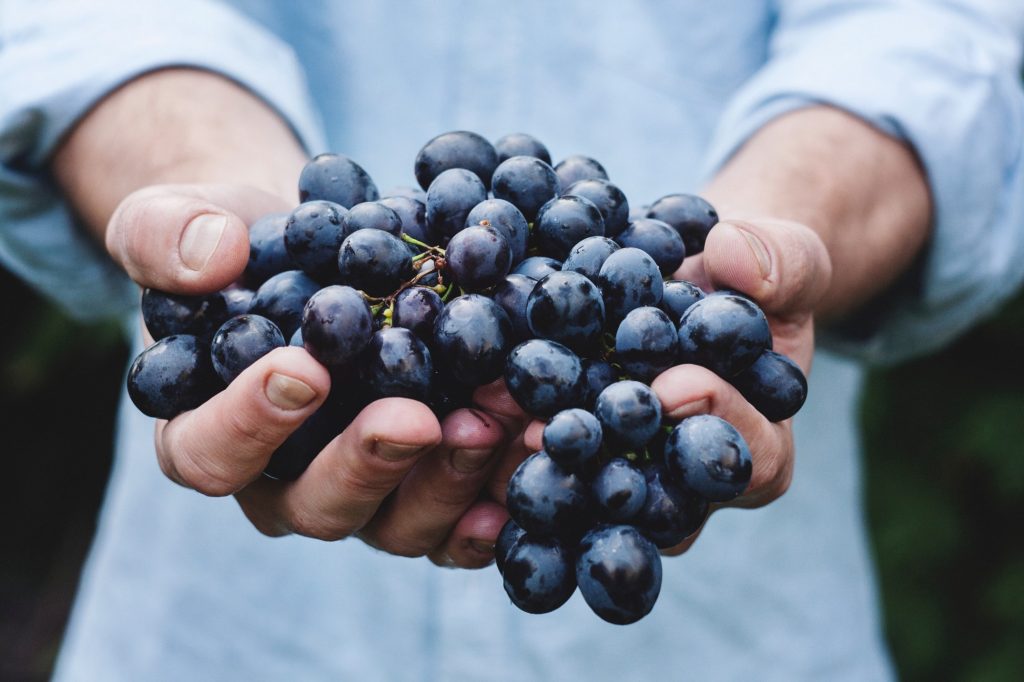
Measuring wine storage conditions
Modern, specially built spaces are able to accommodate a collection of various types of wines. These spaces are typically well thought out including energy consumption, insulation, accessibility and furniture. They can easily store a sizable collection with practically zero headaches.
More traditional wine cellars, on the other hand, might have their unique charm and history embedded in generations of wine making tradition. Yet, they might still require some fine-tuning to meet the modern day standards of wine storage.
Different types of wines require specific temperature ranges to be used for optimal storage. Temperature fluctuations can lead to spoiled wine and reduce the shelf life of any bottled wine.
Bad ventilation can lead to high humidity and in cellar conditions. This could mean problems with fungus, mould and musty odours… All of these challenges are real for both serious businesses as well as the modest wine enthusiast: converting a simple cabinet or storage space into a reasonably safe wine room can quickly turn into a daunting task.
Solution for wine cellar monitoring
Luckily, we are blessed with modern technology. All the necessary measurements can be taken effortlessly by using digital thermometers or humidity meters — or with a specialised sensor beacon, such as RuuviTag. Temperature technology for wine storage has never been this precise yet inexpensive!
This Bluetooth beacon is equipped with a very precise and powerful Bosch BME 280 sensor, which provides real time information about the surrounding temperature, relative air humidity and air pressure. Its data can easily be collected with any mobile device via the Ruuvi Station app, or any compatible 3rd party app.
Ruuvi Station can be set to alert you when any limits are reached or exceeded and all collected sensor data can be viewed in real time directly on your mobile device.

Wine cellar monitoring on a budget
Bluetooth sensor beacons are relatively trouble free to set up: they fit in small spaces and operate faultlessly with their own battery power. These types of sensors can easily be tucked away on a wine rack, shelf, or secured inside the fridge door, where they can be kept safely.
RuuviTag devices are guaranteed to operate in a wide temperature range and are resistant to humidity, when kept inside its weather-proof enclosure. That is why it is the best option to track all sorts of environmental conditions. With Bluetooth technology, it communicates wirelessly with your mobile phone.
Other options include Netamo-sensor for example, which provides similar information. The most important piece of information is the temperature of the wine cellar. Air humidity is also important to know. With these inexpensive sensors, you can start to store more and more expensive wines with peace of mind. With a guarantee of being able to maintain correct conditions, your investments can age in peace.
If you are interested in investing in wine, read this informative article!
RuuviTag as a wine storage monitor
Ruuvi Station mobile application is really easy and straightforward to use. It’s available on Android and iOS devices. In the application, you can see historical data of up to 10 days in a simple graph. You can see even the tiniest differences. Acknowledging and fixing problems is a key to ensuring proper conditions. Here are links to Apple App Store and Google Play.
Furthemore, thanks to Ruuvi Gateway, a cloud service that enables continuous tracking, you can ensure that your wine storing units’ conditions remain correct at all times. You no longer need to be in a Bluetooth range to receive notifications. You will receive a notification when something goes wrong wherever you are. In the Ruuvi Station application, you can set limits to alert you once conditions go outside the pre-set limits.
The Open Source philosophy behind RuuviTag also enables the device to be used in a whole variety of special use cases. It can also be integrated with softwares such as Raspberry pi and Arduino. With a little bit of knowledge and interest in programming and electronics, you can create neat projects in no time. One such application would be tracking vibrations using the device’s LIS2DH12 accelerometer chip. Ruuvi’s active community offers a wide range of ideas and support to bring any project to life. To find inspiration, take a look at our blog.
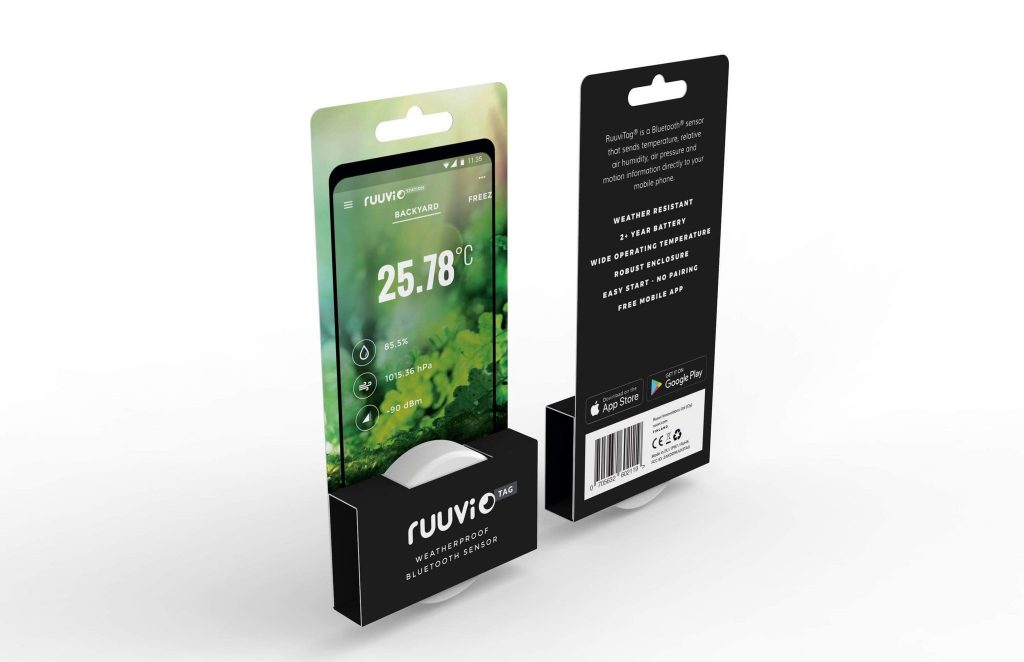
Conclusion
Wine storing is highly sensitive and requires precise conditions. Different types of wines require different conditions. Generally, 12˚ C is the temperature to aim for. In this temperature, most wines will do well. You must also pay attention to proper humidity levels and horizontal storing. With these tips and modern technology to alert you when conditions suddenly change, investing in wine is no longer that difficult or risky.
Whether you are using a traditional wine cellar or just a cabinet for your wines, be sure to monitor them for great tasting wines!
Buy a Temperature and Humidity Sensor to Your Wine Cellar
With RuuviTag, you can monitor and ensure that the conditions are perfect for your precious wine
39,90€
Ruuvi is based in Finland. If you’re an EU consumer, VAT is included. If you’re a non-EU customer, you don't pay VAT. If you're an EU business, insert your VAT ID at checkout.
In stock
RuuviTag Sensor (4in1)
| 5 star | 93% | |
| 4 star | 7% | |
| 3 star | 0% | |
| 2 star | 0% | |
| 1 star | 0% |
RuuviTag Sensor (4in1)
| Quantity | Unit Price(€) |
|---|---|
| 1 | 39,90 |
| 2 | 37,40 |
| 3-5 | 36,90 |
| 6-8 | 35,90 |
| 9-12 | 34,90 |
| 13-25 | 33,90 |
| 26-99 | 32,90 |
Are you looking for bigger quantities? Contact us for pricing.
FAQ
What is the best temperature to store wine at?
Generally, 12˚ C is the temperature to aim for in a wine cellar
What is the ideal humidity for wine storing?
Ideal humidity for wine storage is roughly 65% – 75% of relative humidity. In these humidity levels wine corks do not dry out. On the other hand, in higher relative humidity mold can start to grow or labels and glue can degrade.
Is red wine stored at higher temperatures than other wine types?
Yes, usually red wine thrives in a bit more higher temperature than white wine and sparkling wine. Altough all wines can be stored at a temperature of 12˚ C .
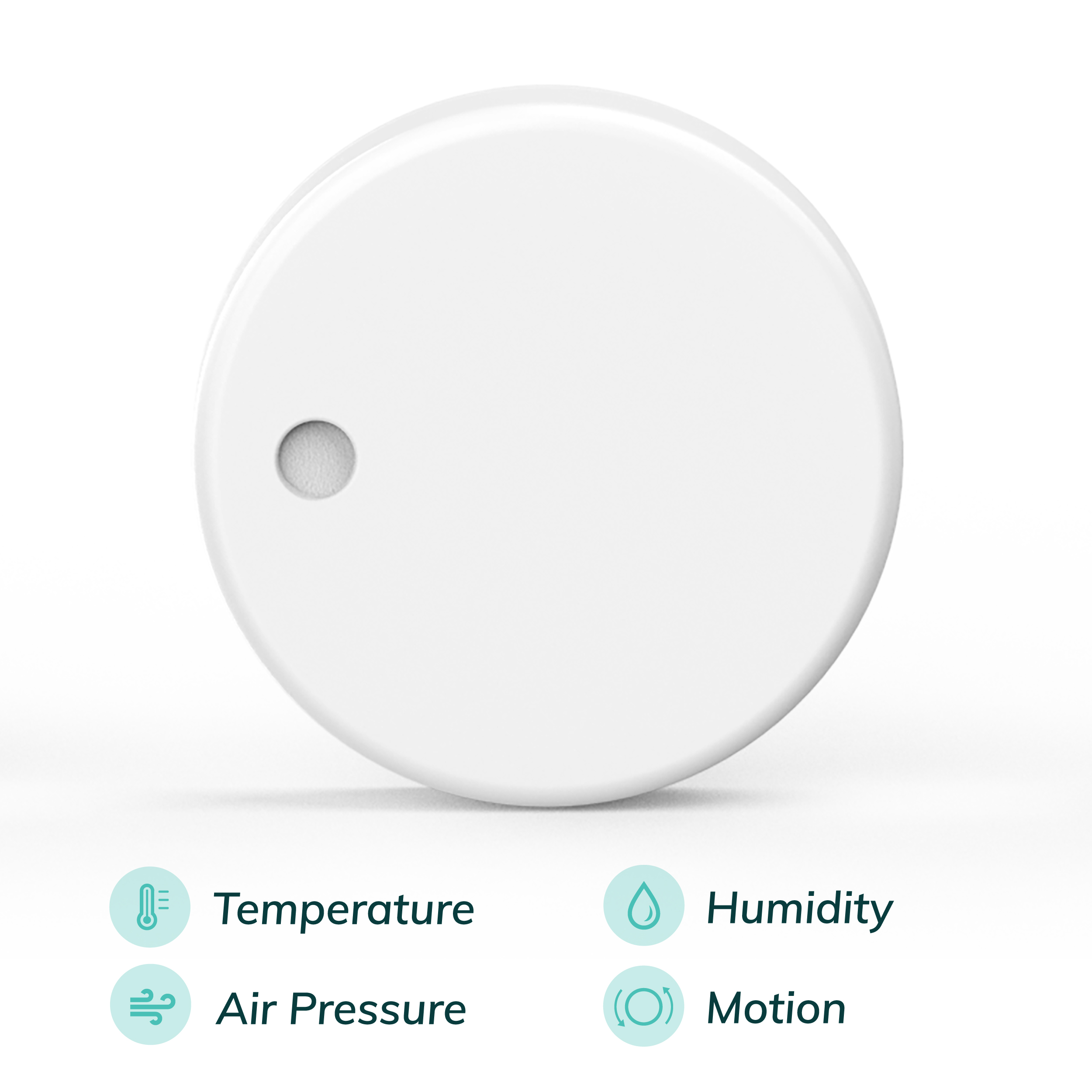
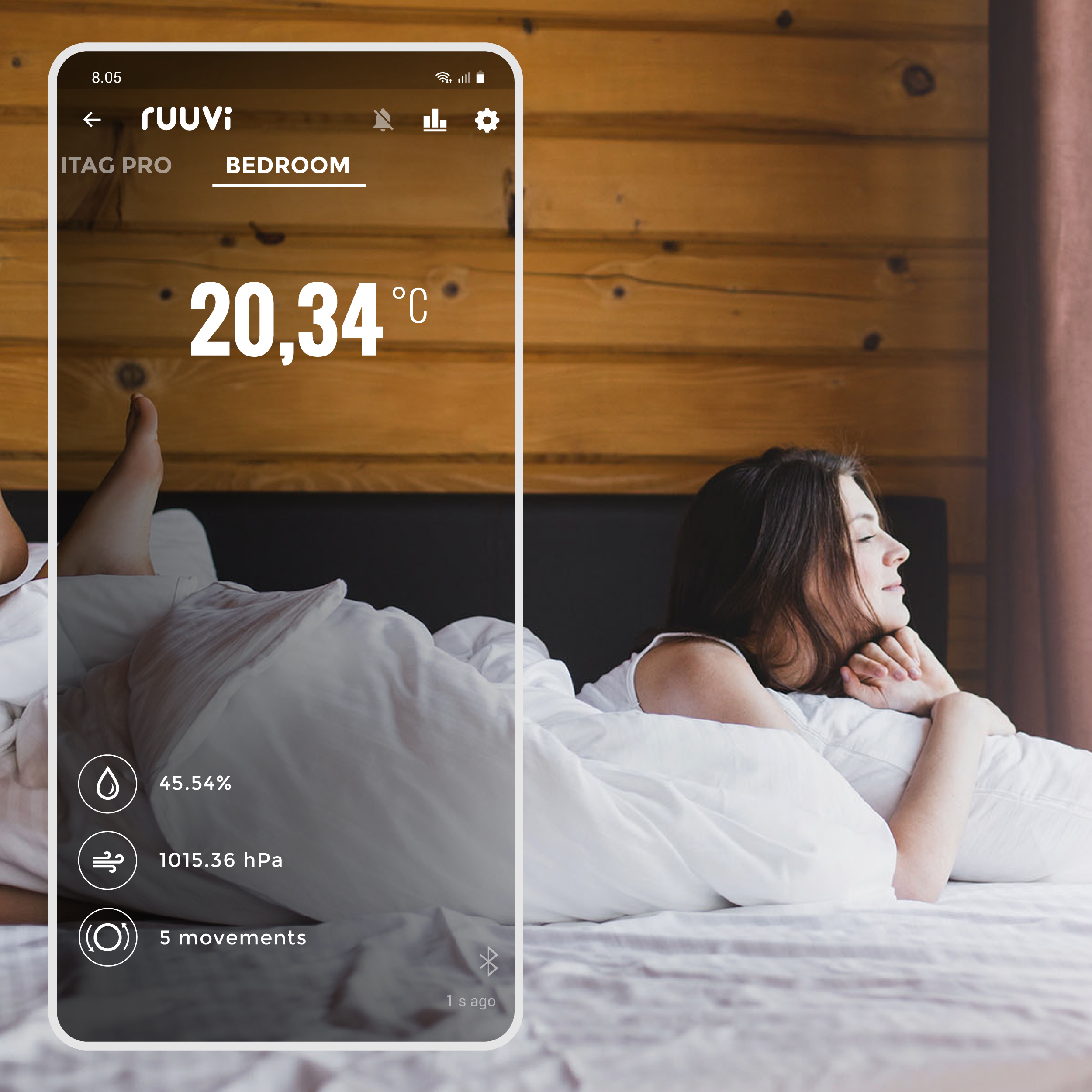

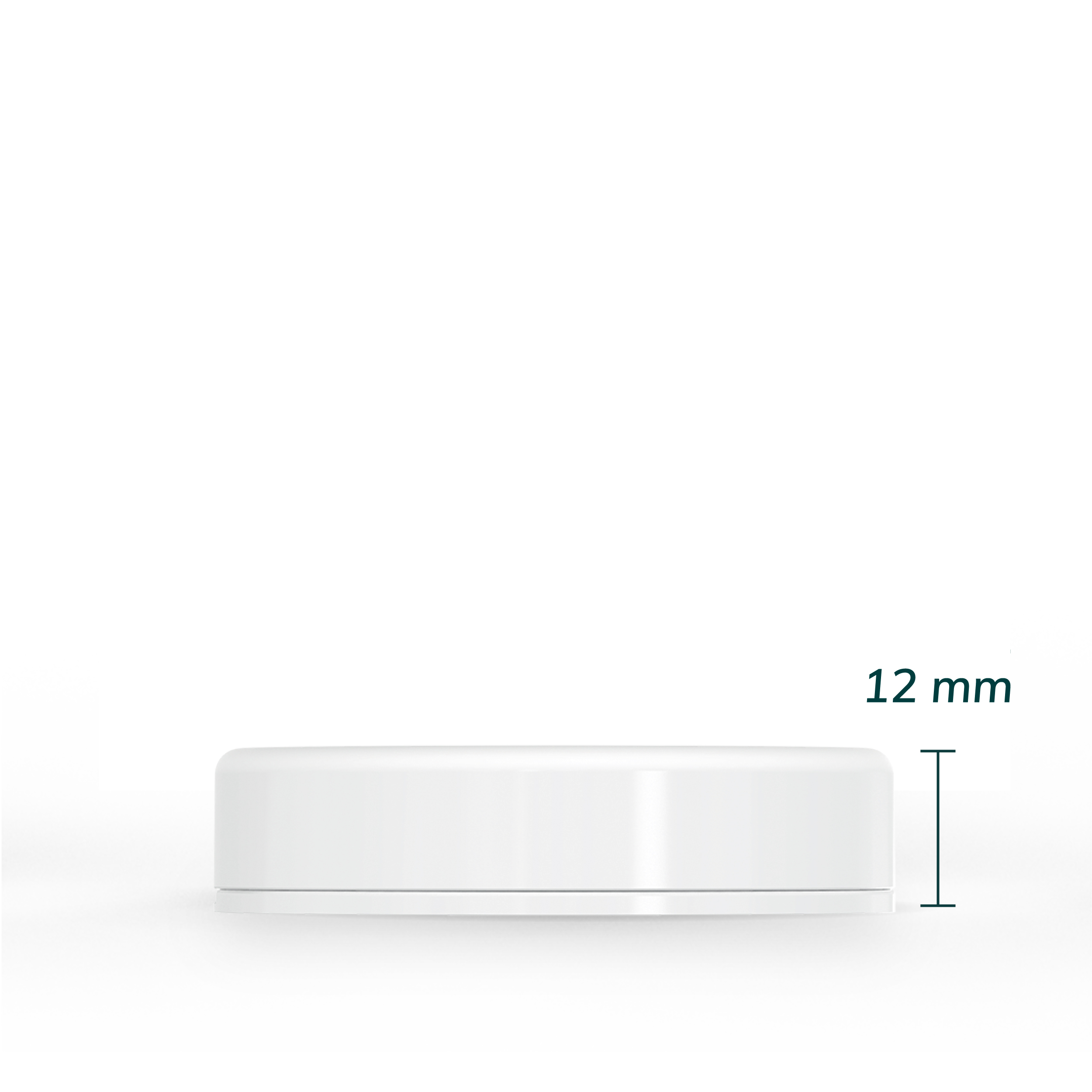
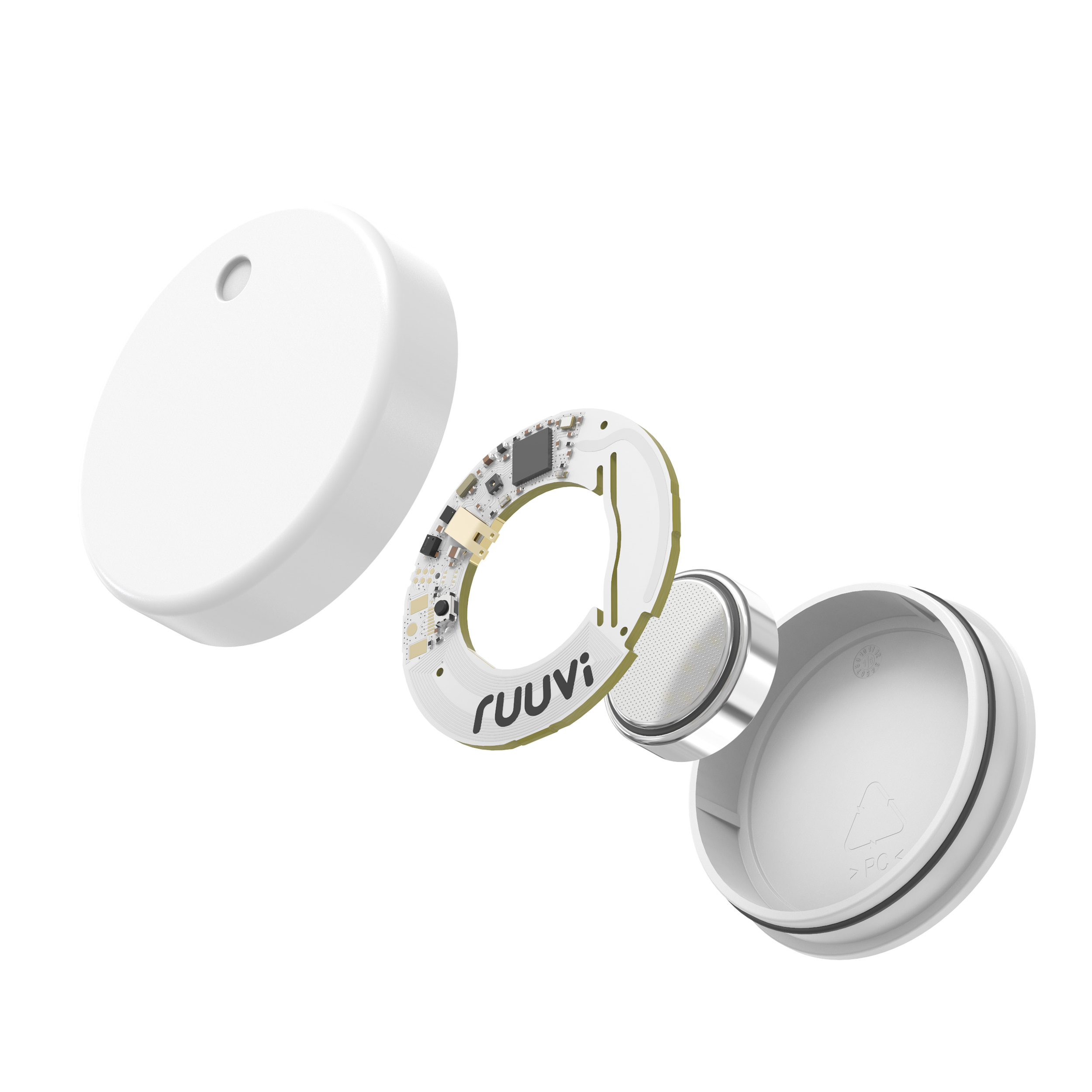
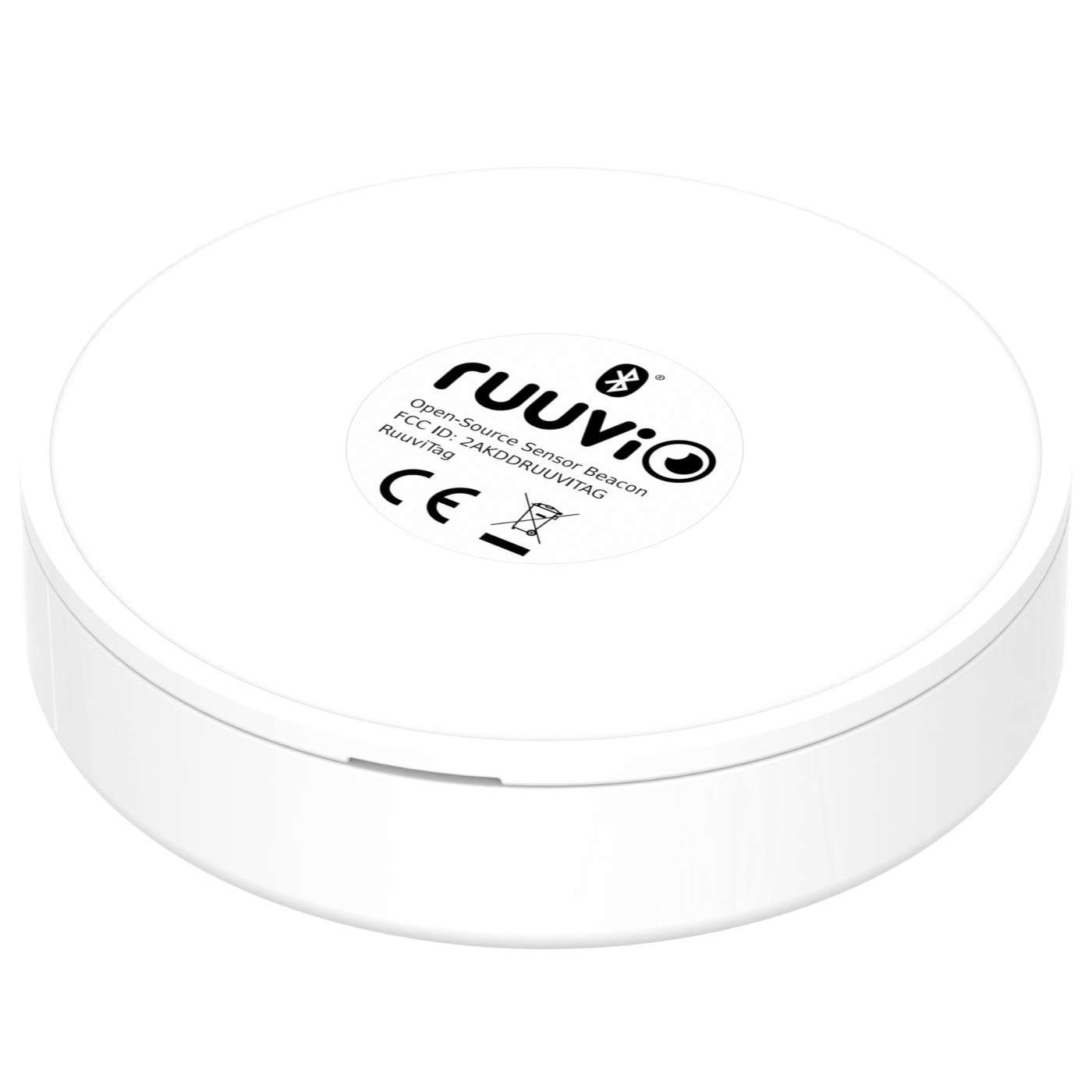
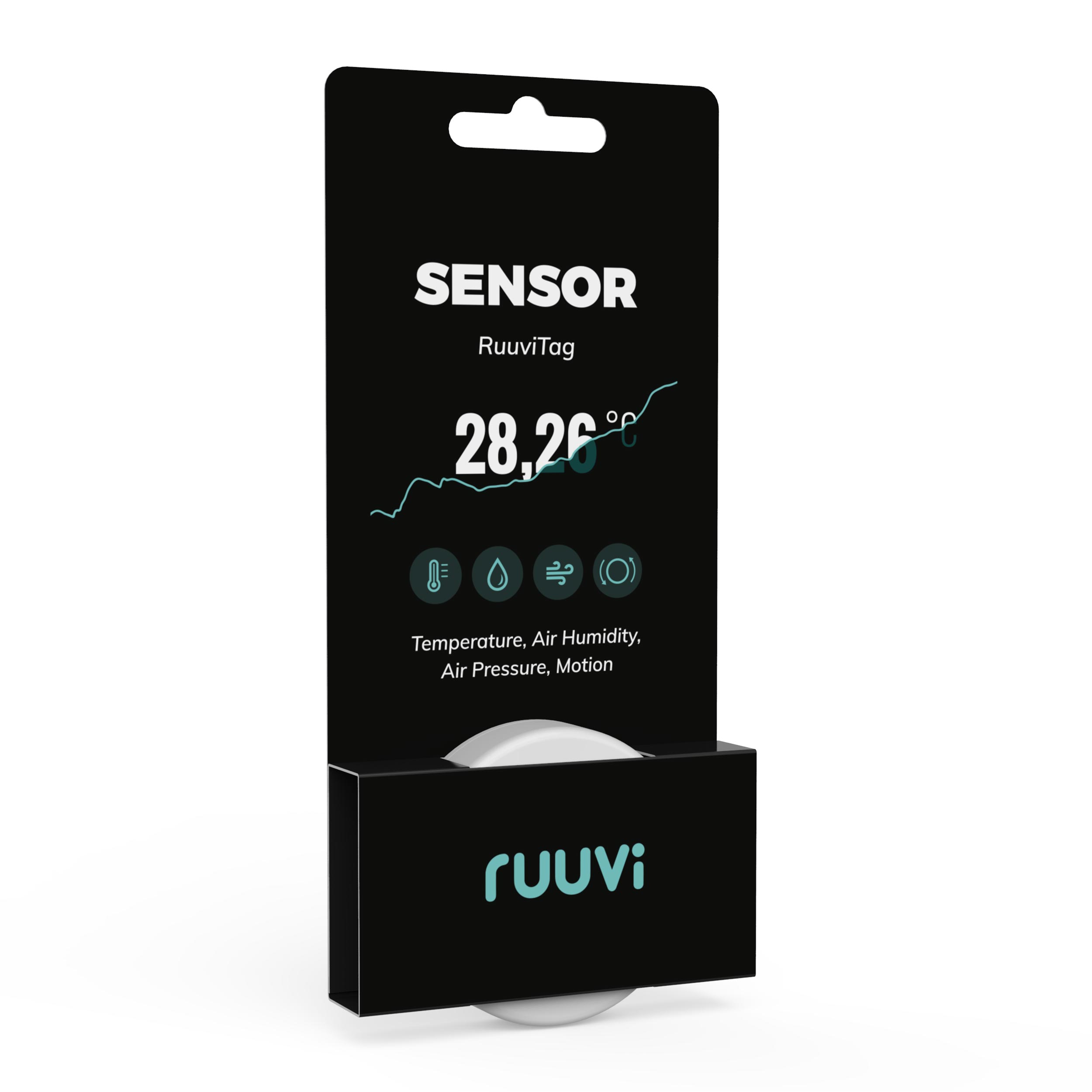
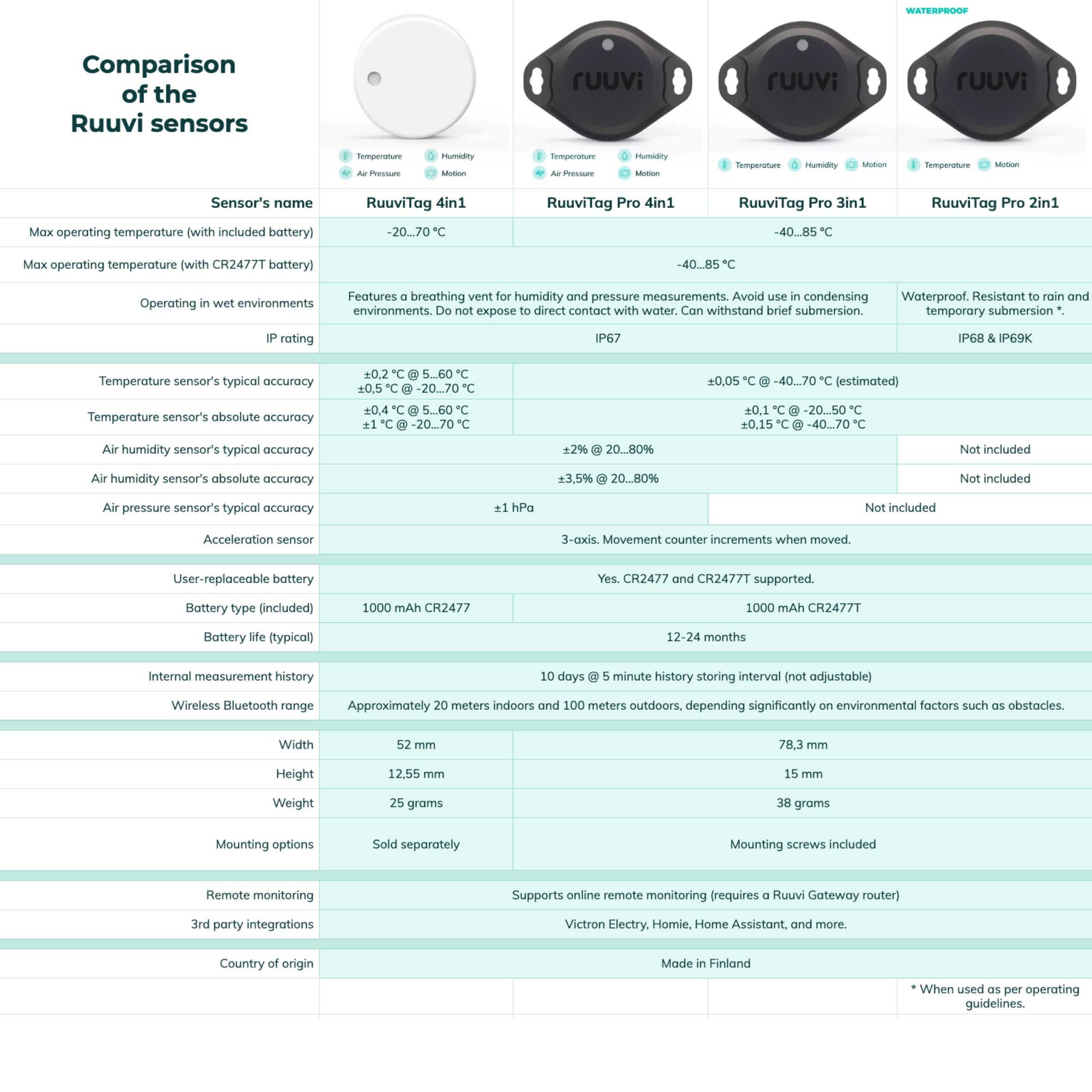

We mainly measure remotely the temperature (rantasauna, grandchildren ‘s bedroom…). Works like junan vessa.
Easy to use!